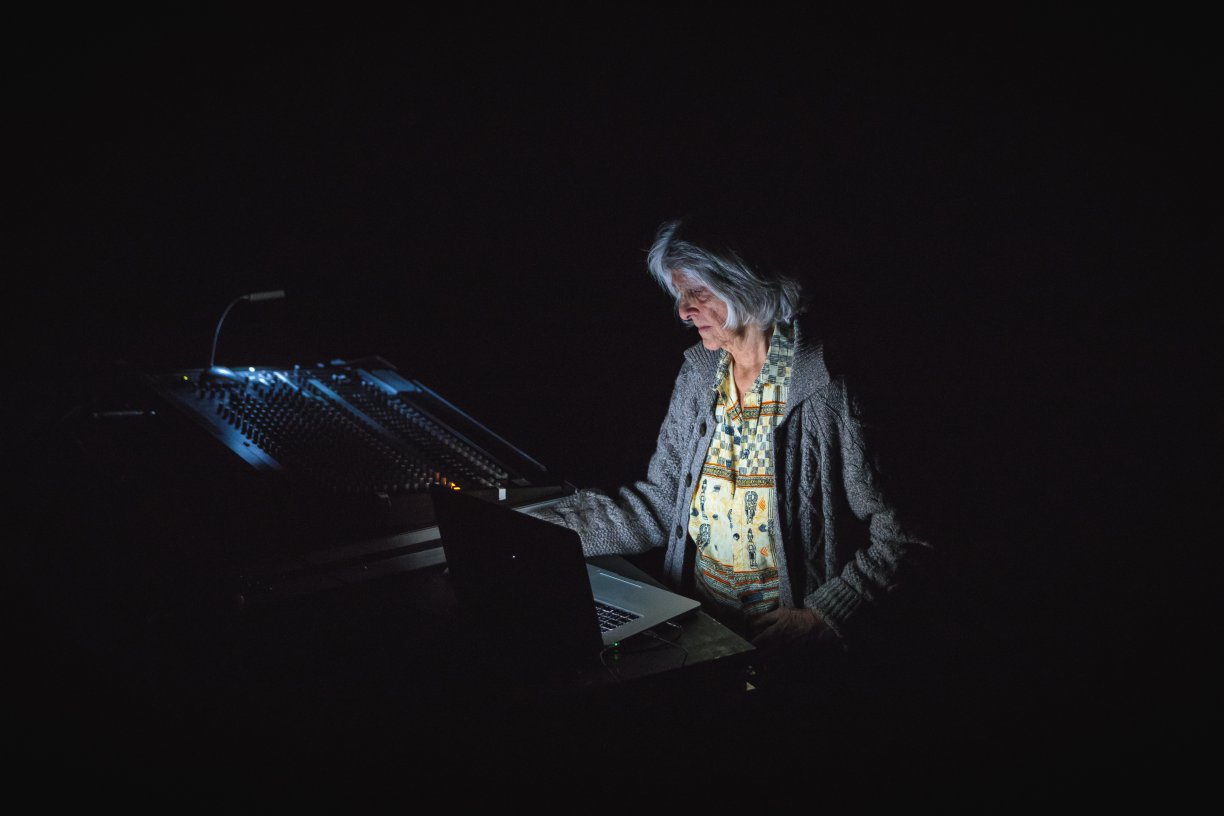Beatriz Ferreyra
Saturday, February 24th, ISSUE presents Argentine acousmatic composer Beatriz Ferreyra and Obfuscation Morphologies, a new work by Eric Frye. Though they differ in generation, both composers employ kindred methods for orienting sonic surfaces with signature intensity and precision across electroacoustic and computer music. Both Ferreyra and Frye present their work specifically for an eight-channel sound arrangement, a rare listening opportunity.
Beatriz Ferreyra began her composing career incidentally, having been exposed to the musical methods of Pierre Schaeffer and the Groupe de Recherches Musicales, shortly after moving from her native Argentina to Paris in the 1960s. Ferreyra’s passion for unusual sounds jump-started an education that led to the creation of her own entrancing electroacoustic works, as well as collaborations with alternative instrument inventors like Bernard Baschet and assisting roles in the realization of compositions by Schaeffer himself.
Ferreyra has remained active in the five decades since her initial experimentations, including work at the Institute for Electroacoustic Music in Bourges and in the field of music therapy, but official releases of her music have been few and far between. In 2015, her album GRM Works was released via Recollection GRM in collaboration with the Viennese label Editions Mego. The pairing of archival recordings with more recent compositions showcased a remarkable consistency of artistic vision. The Recollection GRM label, which has done fine work reissuing epochal works from the likes of Schaeffer, Luc Ferrari and Bernard Parmegiani, decisively position Ferreyra's overlooked work in the otherwise Male-dominated GRM canon.
Despite her close involvement within the history and development of electroacoustic music in Paris, close inspection of her work reveals distinct inspiration and technique, as the album’s accompanying notes reference everything from alchemy to the Qabalah, always giving the suggestion of the organic -- of elusive and ephemeral natural states amidst her varied use of technology. In her description of 1967 work Demeures aquatiques, Ferreyra outlines “The flow is constantly facing the ebb. Everything lies here [...] I wanted to illustrate the perpetual attempt by the solid and the fluid to interpenetrate via this experimental approach through earth, sea and air: overlapping elements folding inwards, bursting as tiny particles toward soft and flat surfaces.”
In late 2016, Ferreyra performed at the Heroines of Sound festival in Berlin, where she spoke with Hanna Bächer for a Fireside Chat on RBMA Radio about her childhood in Argentina, the first time she heard electroacoustic music, her frustration with the younger generation’s emphasis on rhythm, and the lasting influence of Bernard Parmegiani’s Violostries. Most recently, she has performed at Portugal’s Semibreve festival, and with Pan Daijing, Valerio Tricoli and Werner Dafeldecker at St. Elisabeth Kirche in Berlin.
Born in 1937 in Cordoba, Argentina, Beatriz Ferreyra became a student of music in her early years, playing piano in Buenos Aires before moving to Paris to pursue a career as a painter. She instead joined the Groupe de Recherches Musicales (GRM) “with no qualification except my ears.” Regardless, much of her musical work since has been in academia: She’s worked in research departments, lectured at conservatories and held residencies in electronic music at Dartmouth College. Profoundly affected by the disorienting musical methods of Pierre Schaeffer and the GRM – for some time, Ferreyra was the only female composer working with Schaeffer – and contemporaries such as Bernard Parmeggiani, Edgardo Canton and Bruno Maderna. Her sonic palette has expanded dramatically over the decades, while remaining just as experimental as in the early days of cutting tape. In addition to her work for institutions like GRM in Paris and GMEB in Bourges, Ferreyra has composed original music for dance performances, film soundtracks and exercises that relate to therapy and collective experience.
Videography by Yiyang Cao. Edited by Wyatt Owens. Audio mixed by James Emrick.

